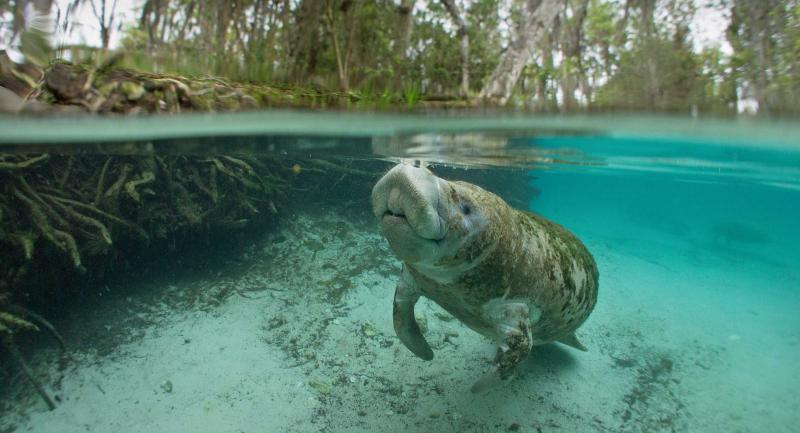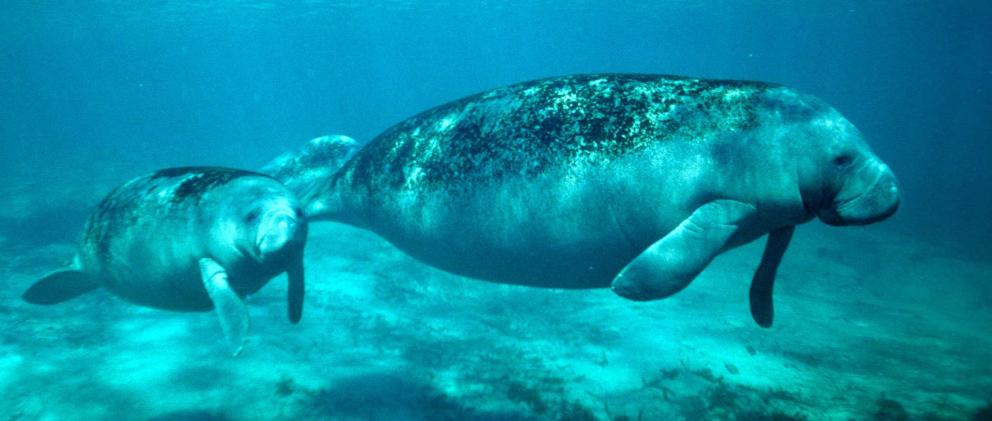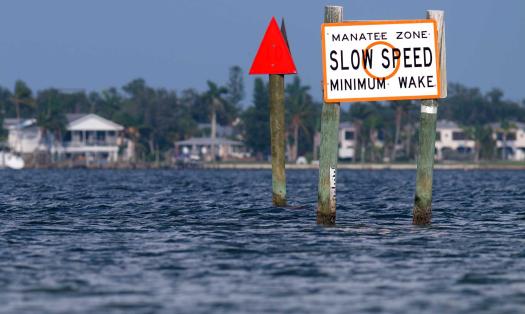Springs are the most important wintering site for threatened manatees on Florida’s West Coast, as they provide thermal refuge when the Gulf of America’s temperature drops below 68 degrees. The springs in Kings Bay remain at a constant 72 degrees year-round. At colder temperatures, manatees may suffer from cold stress or hypothermia as they do not have a thick layer of blubber for protection. If cold weather persists, manatees may not leave the warmth of the springs for days or even weeks. When this happens, manatees do not feed and may lose dozens or even hundreds of pounds! Thin manatees can be identified by deep folds in their skin. Manatees can go for weeks without feeding but cannot survive for long in cold water temperatures.
Manatees conserve energy during periods of cold weather by resting on the bottom of the springs, in the water column or at the surface. Manatees must surface to breathe air even while they are resting. At Three Sisters Springs, areas on the eastern and western sides of the springs are closed during the winter to allow manatees to rest or nurse young without human disturbance. Large numbers of mothers with calves may be found resting inside the springs. During periods of extreme cold weather, the entire springs may be closed to human activity to allow manatees to rest undisturbed.
Wild Florida manatees can grow up to 14 feet in length and weigh up to 3,500 pounds, but their average length is between 8- and 10-feet long and weight between 800 and 1,200 pounds. Manatees are plant eaters, consuming over 60 different freshwater and saltwater plants. They use their flippers to “walk” along the bottom of the water as they search for plants and roots. Once food is found, manatees use their flippers to scoop the vegetation towards their lips. They spend up to seven hours a day feeding and may consume up to 10 percent of their body weight per day!
Manatees have no natural predators. The two greatest threats to manatee survival include the availability of warm-water habitats, such as natural springs, during the winter and injury or death from collisions with boats. Other threats include entanglement with or ingesting of fishing gear and harmful algal blooms known as red tide events.



